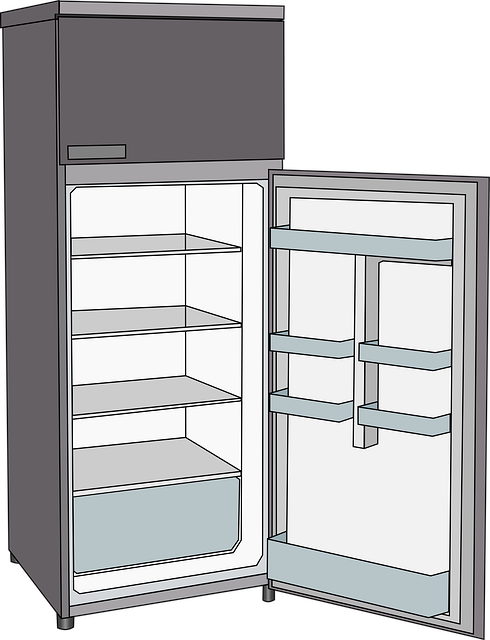Water heater tank insulation is crucial for minimizing heat loss, keeping hot water hotter longer, reducing energy consumption, and extending tank lifespan. Proper insulation for gas or electric tank heaters significantly reduces standby heat loss in hot water storage systems. Optimal heating efficiency requires regular checks for corrosion, leaks, and proper insulation adjustments based on household needs. Upgrading to modern water heater tanks enhances temperature regulation and performance, ensuring reliable hot water with reduced environmental impact.
Maintain consistent hot water temperatures with your insulated water heater tank. This comprehensive guide explores how proper insulation keeps your tank’s internal temperature steady, enhancing energy efficiency and preventing heat loss. We’ll delve into factors influencing temperature consistency, offer tips for optimal heating efficiency, and provide troubleshooting advice for common issues. Learn when to upgrade for enhanced temperature regulation in your water heater tank.
- Understanding Water Heater Tank Insulation
- Factors Affecting Internal Temperature Consistency
- Maintaining Optimal Heating Efficiency
- Common Issues and Troubleshooting Tips
- Upgrading for Better Temperature Regulation
Understanding Water Heater Tank Insulation

Water heater tank insulation is a critical component in maintaining consistent internal temperatures. It works by minimizing heat loss from the tank, ensuring that hot water remains hot for longer periods. Insulated tanks are designed to trap heat within the vessel, reducing the need for frequent reheating cycles. This not only conserves energy but also extends the lifespan of your water heater, making it a wise upgrade for any home or commercial space equipped with traditional water heaters or storage water heaters.
Whether you opt for gas tank heaters, electric tank heaters, or residential water tanks with varying tank capacities, proper insulation is key. For instance, hot water storage systems with enhanced insulation can significantly reduce standby heat loss, improving overall efficiency. By understanding how insulation works and the various types available, homeowners can make informed decisions to optimize their hot water heating systems, contributing to both cost savings and environmental sustainability.
Factors Affecting Internal Temperature Consistency

The internal temperature consistency of a water heater tank is influenced by several factors. One of the primary considerations is the water heater tank‘s insulation, which plays a pivotal role in retaining heat. Modern storage water heaters come equipped with advanced insulation materials designed to minimise heat loss, ensuring a more stable internal temperature. The tank capacity—the volume of water the tank can hold—also matters; larger capacities tend to maintain temperature more effectively due to the increased mass of water.
Additionally, the type of water heating system (gas or electric) and its efficiency contribute to temperature regulation. Electric tank heaters, for instance, often feature adjustable settings that allow for precise control over the desired temperature, enhancing consistency. Conversely, gas tank heaters rely on steady fuel supply and efficient combustion, which can significantly impact overall temperature stability. Other factors like ambient air temperature and thermostat settings also play a role in maintaining consistent internal temperatures in hot water storage systems, ultimately affecting the overall performance of traditional water heaters.
Maintaining Optimal Heating Efficiency

Maintaining optimal heating efficiency in a water heater tank is essential for both energy conservation and consistent hot water supply. Regular maintenance includes checking for any signs of corrosion or leaks, ensuring proper insulation, and adjusting temperature settings to match your household’s needs. Well-maintained storage water heaters can operate at higher efficiencies, reducing energy costs and minimizing heat loss.
Insulation plays a crucial role in tank water heating efficiency. Over time, hot water tanks can lose heat, especially without adequate insulation. Electric or gas tank heaters benefit from proper insulation around the tank, which helps maintain the internal temperature, thus preventing heat escape. This simple yet effective measure significantly contributes to energy-efficient hot water storage systems and traditional water heaters, ensuring a steady supply of hot water while reducing energy wastage.
Common Issues and Troubleshooting Tips

Despite their reliability, water heater tanks can encounter issues that disrupt consistent internal temperatures. One common problem is thermal loss due to inadequate insulation, especially in colder climates. This leads to slower heating and reduced hot water availability. To mitigate this, homeowners should consider upgrading to insulated storage water heaters or adding insulation to existing tanks.
Troubleshooting tips include checking for leaks around connections and valves, as even minor ones can cause temperature fluctuations. Regular maintenance, such as cleaning sediment buildup, is crucial for optimal performance. For gas tank heaters, ensure proper ventilation to avoid dangerous gas accumulation. Electric tank heaters may require adjusting the thermostat settings for consistent heating. Understanding your hot water storage system’s tank capacity and efficiency ratings will help you identify and address any performance issues promptly.
Upgrading for Better Temperature Regulation

Upgrading to a modern, efficient water heater tank can significantly improve temperature regulation and overall performance. Traditional water heaters often struggle to maintain consistent internal temperatures, leading to hot spots and inefficient heating. This is where the latest advancements in water storage systems come into play.
Newer models, such as gas tank heaters or electric tank heaters, are designed with enhanced insulation and advanced heating elements. These features ensure a more uniform distribution of heat within the tank, preventing temperature fluctuations. For residential water tanks, this means hot water is readily available and maintained at optimal levels throughout its storage capacity. Whether you opt for a larger tank for higher hot water demands or a smaller, energy-efficient model, upgrading offers better control over your water heating needs.
Insulated water heater tanks are essential for maintaining consistent internal temperatures, enhancing energy efficiency, and prolonging the lifespan of your heating system. By understanding the factors affecting temperature consistency and implementing proper maintenance practices, you can ensure optimal performance. Regularly addressing common issues and considering upgrades to better regulate temperature will help you navigate the complexities of water heater tank insulation, ultimately leading to a more comfortable and efficient home.






